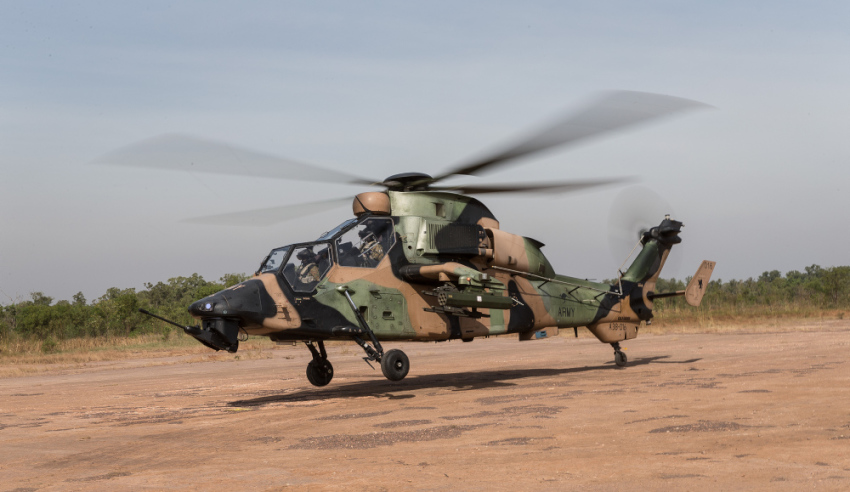Thales and Rheinmetall have successfully finished the modernisation of the flight simulators for the Tiger combat helicopters, shedding light on the potential evolution of Australia’s own fleet of ARH Tiger helicopters.
To continue reading the rest of this article, please log in.
Create free account to get unlimited news articles and more!
The contract was awarded to ARGE TATM (consisting of Rheinmetall Electronics GmbH and Thales AVS France SAS) in December 2014 through the Organisation Conjointe de Coopération en Matière d'Armement (OCCAR), an organisation that fosters cross-border defence procurement co-operation in Europe.
With the completion of this program, French and German armed forces are now able to train their crews in a state-of-the-art virtual environment that ensures full-mission readiness and strengthens flight safety.
For Rheinmetall Electronics and its partners, the contract to modernise the simulators in Le Luc, Fritzlar and Pau meant modifying them to match current configurations of the original aircraft: the Tiger Hélicoptère d’Appui et Destruction (HAD) Block 2 (France) and Kampfhubschrauber Tiger UHT Step 2 Krypto (Germany).
In addition, two new simulators were installed in Phalsbourg, France, in a record 10-month time frame, bridging a training capability gap for the French 1st Helicopter Regiment. Now that the modernisation program is complete, a total of 20 flight simulators are in operation at various locations: eight full-mission simulators (FMS) and 12 cockpit procedure simulators (CPT).
Bertrand Cornet, project manager for Germany and France at OCCAR, explained, "The updated system supplied by Thales and Rheinmetall offers full immersive conditions. It combines a genuine Tiger cockpit, accurate aircraft behaviour and a tactical environment reflecting current operational missions."
The contract encompassed modernisation of the software for the basic management system, the updated ETCM navigation system and the mission equipment systems, together with new cockpit hardware.
Other measures included integration of the German Operational Support System (OSS), into the simulator for mission preparation and tactical training, coupled with modernisation of the existing simulator technology by means of a new visual system, new visual data bases, new projectors for the display systems, and the replacement of obsolete computer technology.
"The completely transformed system architecture points the way to future trends in aircraft development," Cornet added.
The upgrade process culminated in a binational joint exercise at the École Franco-Allemande (EFA, binational school for aircrew training) in Le Luc, involving six simulated helicopters in 12 networked simulators.
Tiger simulators number among the world’s top-performing full-mission simulators for attack helicopters.
The multipurpose Tiger combat helicopter is a highly sophisticated weapon system whose replication in a simulator makes immense demands on both hardware and software. At the school in Le Luc, the focus is on flight and weapons training, while in Fritzlar, Pau and Phalsbourg, the primary emphasis is on tactics.
Co-operation between Rheinmetall Electronics and Thales AVS France SAS continues, with ongoing support of the 20 upgraded Tiger simulators.

 Login
Login







